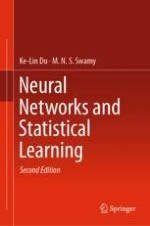2019 | OriginalPaper | Chapter
4. Perceptrons
Authors : Ke-Lin Du, M. N. S. Swamy
Published in: Neural Networks and Statistical Learning
Publisher: Springer London
Activate our intelligent search to find suitable subject content or patents.
Select sections of text to find matching patents with Artificial Intelligence. powered by
Select sections of text to find additional relevant content using AI-assisted search. powered by
